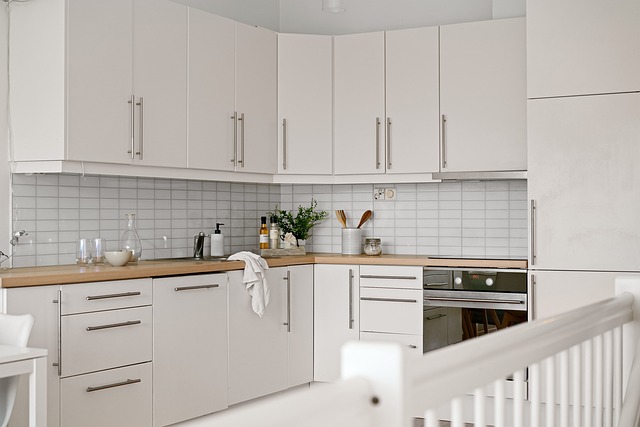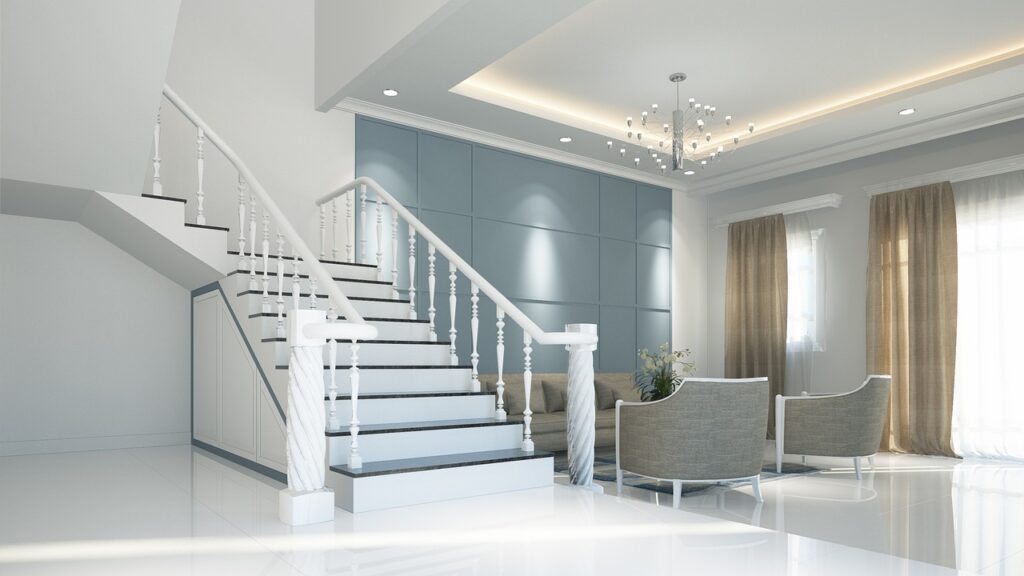1. Architectural Plans Are Just Fancy Drawings
It’s easy to dismiss architectural plans as mere artistic representations, but this couldn’t be further from the truth. These plans are highly technical documents that provide a blueprint for the construction process. They include detailed information about dimensions, materials, structural systems, and compliance with building codes. Understanding the complexity and importance of these documents is essential for appreciating the work of architects and the precision required in construction.
For instance, consider the detailed nature of floor plans, which outline the layout of rooms, the positioning of windows and doors, and the arrangement of furniture. This level of detail ensures that every aspect of the building is planned and coordinated, reducing the likelihood of errors during construction. Moreover, sections and elevations provide vertical and lateral views, showcasing the relationship between different components of the structure and how they interact with each other.
Technical drawings also include specifications for materials and construction methods. This ensures that builders use the right materials and techniques, which is crucial for the safety and longevity of the building. In addition, plans must comply with local building codes and regulations, which vary from one region to another. Failure to adhere to these codes can result in legal issues and unsafe buildings.
2. Anyone Can Read Architectural Plans
Reading architectural plans requires a specific skill set and knowledge base. These documents use a variety of symbols, abbreviations, and conventions that are not immediately intuitive. For example, different lines represent different elements: solid lines for walls, dashed lines for hidden components, and dotted lines for electrical wiring. Similarly, symbols denote doors, windows, fixtures, and furniture, each with specific meanings and measurements.
Architects and builders spend years learning to interpret these symbols accurately. A misinterpretation can lead to significant construction errors. For example, misunderstanding the scale of a drawing can result in a structure that doesn’t fit the intended space. Similarly, failing to recognize a symbol for a load-bearing wall could compromise the building’s structural integrity.
Training in reading architectural plans includes understanding the layout and sequence of different types of drawings, such as site plans, floor plans, sections, elevations, and detailed drawings. Each type of drawing provides a different perspective and set of information, all of which are crucial for the successful execution of a construction project. Builders and contractors must be proficient in reading and interpreting these plans to ensure that the construction process proceeds smoothly and according to the architect’s vision.
3. Architectural Plans Are Only for Big Projects
While it might seem that architectural plans are reserved for grand projects like skyscrapers or commercial buildings, they are equally important for smaller projects. Whether it’s a home renovation, an extension, or even a small commercial space, having a detailed plan is crucial. These plans ensure that the project adheres to building codes, optimizes space, and meets the owner’s needs and preferences.
For example, a home renovation project might involve altering the layout of rooms, adding new fixtures, or changing the position of windows and doors. Without a detailed plan, these changes could lead to structural issues, non-compliance with building codes, and unsatisfactory results. An architectural plan provides a clear blueprint for the renovation, ensuring that all changes are feasible and safe.
Moreover, architectural plans help in obtaining necessary permits and approvals from local authorities. Building codes and regulations are designed to ensure the safety and functionality of structures. Skipping the planning phase can result in violations of these codes, leading to legal issues and potentially unsafe buildings. In the long run, having a detailed architectural plan can save time, money, and hassle by preventing mistakes and ensuring that the project meets all necessary requirements.
4. Changes to Architectural Plans Are Easy and Cheap
Changing an architectural plan is rarely a simple or inexpensive process. Each modification requires a thorough review to ensure that it doesn’t compromise the structural integrity, safety, or functionality of the building. This often involves revisiting calculations, re-evaluating materials, and potentially altering other aspects of the design to accommodate the change.
For instance, changing the position of a load-bearing wall can have significant implications for the building’s structural stability. Such a change would require a new structural analysis, potentially altering the foundation, roof, and other critical components. Similarly, changes to the layout or size of rooms might necessitate adjustments to plumbing, electrical systems, and HVAC installations.
In addition to the technical challenges, changes to architectural plans can also impact the project timeline and budget. Revising plans takes time, which can delay the construction process. Moreover, changes often require additional materials and labor, increasing the overall cost of the project. Therefore, it’s crucial to finalize design decisions as early as possible and to involve all relevant stakeholders in the planning process to minimize the need for changes later on.
5. Architectural Plans Don’t Need to Consider the Environment
Sustainable and eco-friendly design is becoming increasingly important in modern architecture. Far from being solely focused on the structure itself, contemporary architectural plans take into account various environmental factors. These include site orientation, natural light, energy efficiency, water conservation, and the overall environmental impact of the building.
For example, the orientation of a building can significantly affect its energy efficiency. By positioning the building to maximize natural light and minimize heat gain, architects can reduce the need for artificial lighting and air conditioning. Similarly, incorporating features like green roofs, rainwater harvesting systems, and energy-efficient HVAC systems can further enhance the building’s sustainability.
Ignoring environmental considerations can result in buildings that are not only unsustainable but also more expensive to operate and maintain. High energy consumption, poor indoor air quality, and inefficient use of resources can all contribute to higher operating costs and a larger environmental footprint. By incorporating sustainable design principles into architectural plans, architects can create buildings that are more efficient, healthier, and more environmentally friendly.
6. All Architects Use the Same Design Approach
Architects have diverse styles and philosophies, and their design approaches can vary significantly. Some architects might prioritize functionality and minimalism, creating sleek, modern spaces that emphasize simplicity and efficiency. Others might focus on aesthetics and ornamentation, designing buildings with intricate details and decorative elements.
For example, an architect with a minimalist approach might design a home with clean lines, open spaces, and a neutral color palette, focusing on functionality and the efficient use of space. In contrast, an architect with a more traditional approach might incorporate decorative moldings, ornate fixtures, and a variety of textures and colors to create a more elaborate and visually rich environment.
Understanding these differences is crucial when selecting an architect for a project. The architect’s unique style and approach will significantly influence the final outcome, affecting everything from the building’s appearance to its functionality and sustainability. It’s important to choose an architect whose vision aligns with the client’s needs and preferences to ensure a successful and satisfying result.
7. Architectural Plans Are Final and Unchangeable
While it’s ideal to finalize architectural plans before construction begins, changes can and do occur. Unforeseen issues, client preferences, or new opportunities might necessitate adjustments to the plans. However, making these changes can be complex and costly, as they often require re-evaluation of various aspects of the design and construction.
For instance, discovering an unexpected issue on the construction site, such as unstable soil or hidden utility lines, might require adjustments to the foundation or layout. Similarly, a client might request changes to the design after seeing a mock-up or realizing that their needs have evolved. In such cases, the architect must revisit the plans, making necessary modifications while ensuring that the changes don’t compromise the building’s integrity or compliance with codes.
Flexibility is often built into the planning process to accommodate these changes, but it’s always best to minimize alterations to avoid disruptions and additional costs. Effective communication and collaboration among all parties involved are crucial to address any issues that arise and ensure that the project stays on track.
8. Architectural Plans Guarantee Perfect Execution
Having a detailed architectural plan is essential for guiding the construction process, but it doesn’t guarantee flawless execution. Various factors, such as site conditions, material availability, and human error, can impact the construction process and result in deviations from the plan.
For example, unexpected weather conditions can delay construction or require adjustments to the building schedule. Similarly, issues with material supply chains might necessitate substitutions or modifications to the design. Human error, whether in interpreting the plans or in the actual construction work, can also lead to mistakes that need to be addressed.
Effective communication and collaboration among all parties involved, including architects, builders, contractors, and clients, are crucial for addressing these issues and ensuring that the project stays on track. Regular site visits, progress meetings, and open lines of communication can help identify and resolve problems early, minimizing their impact on the overall project.
9. Architectural Plans Are Only About the Building’s Exterior
Architectural plans encompass every aspect of a building, not just its exterior appearance. These plans provide detailed information about the interior layout, including the arrangement of rooms, the positioning of fixtures and furniture, and the integration of electrical, plumbing, and HVAC systems.
For example, a floor plan outlines the layout of rooms, showing how they connect and interact with each other. This ensures that the space is functional and meets the client’s needs. Detail drawings provide information about specific elements, such as the design of a staircase or the installation of a kitchen, ensuring that all components are correctly built and installed.
Sections and elevations provide vertical and lateral views, showing the relationship between different components of the structure and how they interact. This comprehensive approach ensures that every aspect of the building, both inside and out, is carefully planned and coordinated.
Overlooking the interior details can lead to practical problems and dissatisfaction with the final result. For example, poor layout planning might result in awkward room configurations or insufficient storage space. Inadequate planning for electrical or plumbing systems can lead to costly and disruptive issues down the line. By providing a comprehensive blueprint for both the aesthetics and functionality of a space, architectural plans ensure that all aspects of the building are well-designed and integrated.
10. DIY Plans Are Just as Good as Professional Ones
The rise of DIY culture has led some individuals to believe that they can create their own architectural plans without professional help. While DIY plans might work for very small projects, professional architects bring a wealth of knowledge and experience that is crucial for larger or more complex undertakings.
Professional architects are trained to understand the intricacies of design, construction, and building codes. They have the expertise to create plans that are not only aesthetically pleasing but also structurally sound and compliant with all necessary regulations. This ensures that the project is safe, functional, and meets the client’s needs.
For example, an architect designing a home extension will consider factors such as the load-bearing capacity of walls, the integration of new and existing systems, and the overall flow and functionality of the space. They will also ensure that the design complies with local building codes and zoning regulations, avoiding potential legal issues.
Attempting to create DIY plans can result in costly errors and legal issues. Without professional expertise, it’s easy to overlook critical details or misunderstand building codes, leading to structural problems, safety hazards, and non-compliance with regulations. In the long run, investing in professional architectural services can save time, money, and hassle by ensuring that the project is well-designed, safe, and compliant with all necessary requirements.
Conclusion:
By understanding these common misconceptions about architectural plans, individuals can better appreciate the complexity and importance of these documents. Whether you’re planning a small renovation or a large-scale construction project, working with professional architects and taking the time to understand and finalize detailed plans can help ensure a successful and satisfying result.

Transform Your Home with Architectural Plans by Red White & Blue Construction!
Are you planning to enhance your home’s layout in Lafayette, CA? Look no further than Red White & Blue Construction for top-tier architectural plans! Specializing in detailed planning and execution, we customize our strategies to fit your unique needs and vision. Renowned for our expertise in architectural design, we are dedicated to transforming your space into a more stylish, functional, and modern environment. Every project we undertake is meticulously planned and executed to surpass your expectations. Our distinguished reputation throughout the Bay Area highlights our commitment to precision, quality, and the highest standards in every project phase.
At Red White & Blue Construction, we strive to do more than just update your home’s layout; we aim to elevate your entire renovation experience. With our comprehensive planning, transparent pricing, and unmatched customer service, choosing us for your architectural design needs ensures a smooth, efficient renovation journey. Choose Red White & Blue Construction and take the first step towards a more stylish and functional home. Contact us today to get started!
Disclaimer
The materials available on this website are for informational and entertainment purposes only and not to provide advice. You should obtain advice concerning any particular issue or problem from a professional. You should not act or refrain from acting based on any content included in this site without seeking legal or other professional advice. The information presented on this website may reflect only some of the current building developments. No action should be taken in reliance on the information on this website. We disclaim all liability concerning actions taken or not taken based on any or all of the contents of this site to the fullest extent permitted by law.





